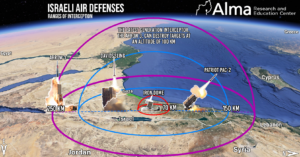The latest attack against the activity of the Iranian corridor in Syria was carried out on October 21 in the Damascus area. The Syrian army, through its air defenses, regularly attempts to fire against attacking forces. Generally, the Syrian army is not a primary target.

However, the forces and equipment of the Syrian army are damaged and suffer losses when they violate the “don’t shoot and don’t get hurt” equation. If the infrastructure storing and producing munitions of the Iranian corridor is located inside Syrian army bases and CERS Institute facilities, They will also be harmed in a targeted manner. In the latest attack on October 21, soldiers and equipment of the Syrian Air Defense Forces stationed at the Dimas base, west of Damascus, were damaged. Among other things, a YLC-6M radar was hit.

The Iranian corridor to Syria and Lebanon by land, air, and sea operates continuously. Sometimes it works at high intensity, and sometimes at low intensity. The operation of the Iranian corridor includes smuggling weapons to Syria and Lebanon and the infrastructure for producing and assembling advanced conventional weapons on Syrian soil. The precision missile project is a prime example of this.
As part of the CBW, attacks are carried out aimed at thwarting, disrupting, and delaying the smuggling of weapons and the production infrastructure. It seems that the damage to the routes of the air and sea corridor is the most severe. In contrast, the land corridor was less affected. According to reports in Israel, there is a success of about 70 percent in impairing the transfer of weapons and of about 90 percent in damaging the weapons production infrastructure on Syrian soil.
This is a Sisyphean campaign. The more damage is done, the more the other side makes changes, finds alternatives, and rehabilitates infrastructures. In our assessment, the attack on the CERS 4000 institute in Masyaf on August 25 struck a fatal blow to the advanced weapons production infrastructure. However, as we have already published, the rehabilitation processes at the site, led by the IRGC, have already begun.
*After further evaluation, the Buk-M2 SAM batteries in the image on top may be SA-6 batteries.






